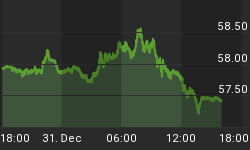The wealthy and upper middle class have mostly recovered from the financial troubles caused by the pandemic, if they even had any.
Economists are warning that the U.S. is experiencing a “K-shaped” recovery, with uneven economic recovery across sectors and earning groups--a situation that threatens to further divide the country into haves and have-nots.
The country’s recovery was also a subject of the Presidential debate, during which President Donald Trump was predicting a “V recovery”, suggesting a quick return to pre-pandemic levels.
“This is better than a V. This is a rocket ship. This is far better than a V,” Trump said.
Democratic presidential nominee Joe Biden had a different view, supporting the economists’ claims of a K-shaped recovery, with real recovery being largely experienced by the rich, while others haven’t reaped those gains.
“If you’re on the top, you’re going to do very well and if you’re on the bottom or if you’re in the middle of the bottom, your income is coming down. You’re not getting a raise,” Biden said.
By last May, more than 40 million people had filed for unemployment. During the peak months of the pandemic, April and May, the unemployment rate was hovering around 15% with the Fed estimating that the unemployment rate could top 30%.
Currently, the national average is 6.7%; but that doesn’t tell the whole story as the unemployment rate for the lowest earners may be three times the national average.
Federal Reserve Governor Lael Brainard said last week that unemployment for workers in the bottom wage quartile in the U.S. is likely above 20%.
“The damage from COVID-19 is concentrated among already challenged groups. The K-shaped recovery remains highly uneven, with certain sectors and groups experiencing substantial hardship,” Brainard said in a speech Wednesday.
The black unemployment rate is 9.9% and the Hispanic rate is at 9.3%, while the rate for whites is 6%.
While the 78% of Americans living paycheck to paycheck probably weren’t counting on joining the millionaires club anytime soon, it’s still not promising news.
According to a recent GoBankingRates survey, only 21% of Americans have more than $10,000 in savings, with nearly 60% having
Yet, employment recovery for the top quartile of workers is currently above levels from a year ago.
According to data from Opportunity Insights, a Harvard-based research institute,
those earning over $60,000 a year, recovered fully by late summer. Since then, their financial situation improved and they were able to put stimulus checks into savings, refinance mortgages and do additional real estate purchases. The unemployment rate within this earning group is less than 4%.
Additionally, America’s 614 billionaires grew their net worth by a collective $931 billion.
The unequal, “K-shaped” recovery is also playing out across corporate America. Big companies got even bigger last year, while small businesses are collapsing.
From Amazon to Walmart and McDonalds to Costco, many of America’s biggest businesses reported year-on-year double-digit sales increases. On the flip side, a new study conducted by American universities projected that more than 100,000 small businesses in the United States have permanently shut their doors since March.
According to a survey by the National Bureau of Economic Research, just 30% of thousands of small businesses expected to survive a four-month lockdown and we are now entering a full year of lockdowns.

















